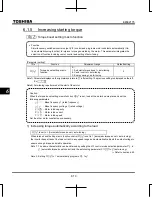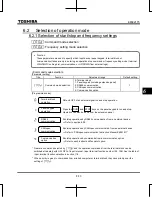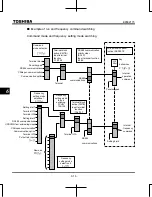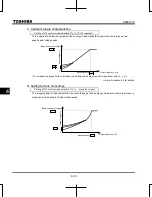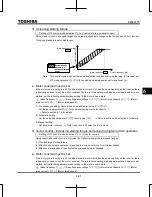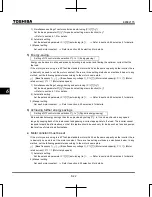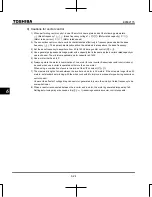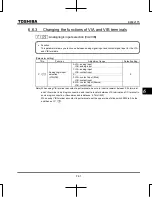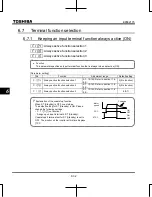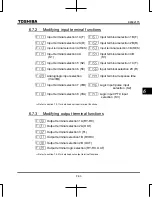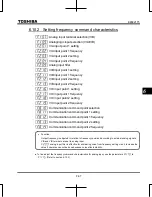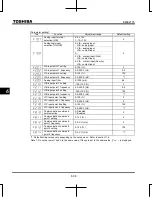
E6582175
F-24
6
9) Cautions for vector control
1) When performing vector control, look at the motor's name plate and set the following parameters.
(Base frequency 1),
(Base frequency voltage 1),
(Motor rated capacity),
(Motor rated current),
(Motor rated speed)
2) The sensorless vector control exerts its characteristics effectively in frequency areas below the base
frequency (
). The same characteristics will not be obtained in areas above the base frequency.
3) Set the base frequency to anywhere from 40 to 120Hz during vector control (
=
).
4) Use a general purpose squirrel-cage motor with a capacity that is the same as the inverter's rated capacity or
one rank below. The minimum applicable motor capacity is 0.1kW.
5) Use a motor that has 2-8 P.
6) Always operate the motor in combination of one motor for one inverter. Sensorless vector control cannot
be used when one inverter is operated with more than one motor.
When using a combination of several motors, set the V/F constant (
=
).
7) The maximum length of wires between the inverter and motor is 30 meters. If the wires are longer than 30
meters, set standard auto-tuning with the wires connected to improve low-speed torque during sensorless
vector control.
However the effects of voltage drop cause motor-generated torque in the vicinity of rated frequency to be
somewhat lower.
8) When a reactor is connected between the inverter and a motor, the motor's generated torque may fall.
Setting auto-tuning may also cause a trip (
) rendering sensorless vector control unusable.
Summary of Contents for TOSVERT VF-S15 series
Page 394: ......

